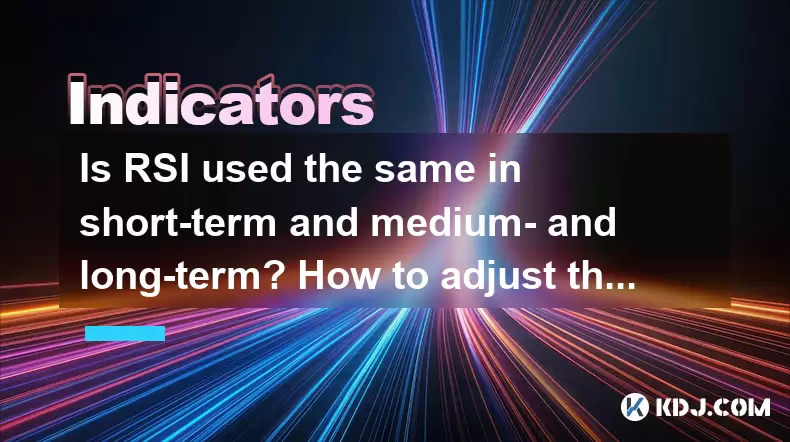-
 Bitcoin
Bitcoin $118600
0.36% -
 Ethereum
Ethereum $3855
1.06% -
 XRP
XRP $3.195
-0.09% -
 Tether USDt
Tether USDt $1.000
-0.04% -
 BNB
BNB $844.5
6.23% -
 Solana
Solana $191.3
2.83% -
 USDC
USDC $0.9997
-0.01% -
 Dogecoin
Dogecoin $0.2376
0.10% -
 TRON
TRON $0.3242
0.83% -
 Cardano
Cardano $0.8222
0.13% -
 Hyperliquid
Hyperliquid $45.26
6.53% -
 Sui
Sui $4.200
-2.56% -
 Stellar
Stellar $0.4336
-1.24% -
 Chainlink
Chainlink $18.86
0.28% -
 Hedera
Hedera $0.2796
-1.75% -
 Bitcoin Cash
Bitcoin Cash $583.3
-1.84% -
 Avalanche
Avalanche $27.06
8.09% -
 Litecoin
Litecoin $112.3
-1.16% -
 Toncoin
Toncoin $3.353
0.58% -
 UNUS SED LEO
UNUS SED LEO $8.968
-0.11% -
 Shiba Inu
Shiba Inu $0.00001395
-0.54% -
 Ethena USDe
Ethena USDe $1.001
-0.03% -
 Uniswap
Uniswap $10.76
0.69% -
 Polkadot
Polkadot $4.175
0.26% -
 Monero
Monero $326.7
1.07% -
 Bitget Token
Bitget Token $4.665
1.61% -
 Dai
Dai $0.9998
-0.02% -
 Pepe
Pepe $0.00001271
0.32% -
 Cronos
Cronos $0.1416
2.01% -
 Aave
Aave $299.3
1.15%
Is RSI used the same in short-term and medium- and long-term? How to adjust the parameters?
RSI is a versatile momentum oscillator used in crypto trading, with adjustments needed for short-term (2-10 days), medium-term (14-25 days), and long-term (21-50 days) strategies.
May 24, 2025 at 10:14 pm

The Relative Strength Index (RSI) is a widely used momentum oscillator that measures the speed and change of price movements in the cryptocurrency market. It's essential to understand how RSI can be applied differently across various time frames and how to adjust its parameters to optimize its effectiveness. Let's explore how RSI is used in short-term, medium-term, and long-term trading, and delve into the process of adjusting its parameters.
RSI in Short-Term Trading
In short-term trading, which often refers to time frames ranging from minutes to a few days, the RSI is typically used to identify overbought and oversold conditions quickly. The standard RSI period for short-term trading is 14 days, but many traders prefer a shorter period to capture more frequent signals.
- Overbought and Oversold Levels: In short-term trading, the overbought level is often set at 70, and the oversold level at 30. When the RSI crosses above 70, it indicates that the asset might be overbought and could be due for a price correction. Conversely, when it drops below 30, it suggests that the asset is oversold and might be poised for a price increase.
- Divergence: Traders also look for divergence between the RSI and price action. If the price makes a new high but the RSI fails to make a new high, it could signal a potential reversal. Similarly, if the price makes a new low but the RSI does not, it might indicate a bullish reversal.
- Quick Adjustments: Due to the fast-paced nature of short-term trading, traders might adjust the RSI period to as low as 2-5 days to get more sensitive signals. However, this increases the risk of false signals.
RSI in Medium-Term Trading
Medium-term trading typically involves holding positions from a few weeks to a few months. The standard 14-day RSI period is often used here as well, but adjustments can be made to better suit the trading strategy.
- Overbought and Oversold Levels: Similar to short-term trading, the overbought and oversold levels are generally set at 70 and 30, respectively. However, some traders might adjust these levels to 80 and 20 to reduce the number of false signals.
- Trend Confirmation: In medium-term trading, the RSI can be used to confirm trends. If the RSI remains above 50 during an uptrend, it supports the bullish trend. Conversely, if it stays below 50 during a downtrend, it confirms the bearish trend.
- Adjustments: Traders might extend the RSI period to 20-25 days to smooth out short-term fluctuations and focus on more significant trends. This adjustment helps in reducing the noise and providing more reliable signals.
RSI in Long-Term Trading
Long-term trading involves holding positions for months to years. In long-term trading, the RSI period is often extended to 21 days or more to capture broader market trends.
- Overbought and Oversold Levels: The overbought and oversold levels can be set at 80 and 20, respectively, to filter out short-term noise and focus on significant market movements.
- Trend Identification: The RSI is used to identify long-term trends. A long-term uptrend is often confirmed if the RSI consistently stays above 50, while a long-term downtrend is confirmed if it stays below 50.
- Adjustments: Traders might use a 30-day or even 50-day RSI period to capture long-term trends more accurately. This longer period helps in smoothing out short-term volatility and focusing on the overall direction of the market.
How to Adjust RSI Parameters
Adjusting the RSI parameters involves changing the period and the overbought/oversold levels to suit your trading strategy and time frame. Here's a detailed guide on how to make these adjustments:
Changing the RSI Period: The period determines how many data points are used to calculate the RSI. A shorter period will make the RSI more sensitive to price changes, while a longer period will make it less sensitive.
- For short-term trading: Consider using a period of 2-10 days.
- For medium-term trading: Use a period of 14-25 days.
- For long-term trading: Use a period of 21-50 days.
Adjusting Overbought and Oversold Levels: These levels determine when an asset is considered overbought or oversold.
- For short-term trading: Use 70 for overbought and 30 for oversold.
- For medium-term trading: Consider using 80 for overbought and 20 for oversold to reduce false signals.
- For long-term trading: Use 80 for overbought and 20 for oversold to focus on significant market movements.
Implementing Changes in Trading Platforms: Here's how to adjust RSI parameters on popular trading platforms:
- On TradingView:
- Open the chart for the cryptocurrency you are analyzing.
- Click on the "Indicators" button at the top of the chart.
- Search for "RSI" and select it.
- In the RSI settings, change the "Length" to your desired period.
- Adjust the "Overbought" and "Oversold" levels as needed.
- Click "Save" to apply the changes.
- On MetaTrader 4:
- Open the chart for the cryptocurrency you are analyzing.
- Click on "Insert" in the top menu, then "Indicators," and select "Oscillators."
- Choose "Relative Strength Index."
- In the RSI settings, change the "Period" to your desired number.
- Adjust the "Levels" for overbought and oversold as needed.
- Click "OK" to apply the changes.
- On TradingView:
Practical Examples of RSI Adjustments
Let's look at some practical examples of how RSI adjustments can impact trading decisions:
- Short-Term Example: Suppose you are trading Bitcoin on a 1-hour chart. You set the RSI period to 5 days to capture quick movements. You notice the RSI crosses above 70, indicating Bitcoin might be overbought. You decide to sell your position and wait for the RSI to drop below 30 to consider buying again.
- Medium-Term Example: You are trading Ethereum on a daily chart. You set the RSI period to 20 days to focus on more significant trends. The RSI stays above 50 for several weeks, confirming a bullish trend. You decide to hold your position and look for opportunities to add to your holdings.
- Long-Term Example: You are investing in a promising altcoin on a weekly chart. You set the RSI period to 30 days to capture long-term trends. The RSI remains below 50 for an extended period, confirming a bearish trend. You decide to wait for the RSI to cross above 50 before considering a long-term investment.
Conclusion on RSI Usage Across Time Frames
Understanding how to use and adjust the RSI across different time frames is crucial for effective trading in the cryptocurrency market. Short-term traders need to be agile and responsive to quick market changes, often using shorter RSI periods and standard overbought/oversold levels. Medium-term traders focus on confirming trends and reducing noise, which may involve slightly longer RSI periods and adjusted overbought/oversold levels. Long-term traders aim to capture broad market trends, using even longer RSI periods and more conservative overbought/oversold levels.
By tailoring the RSI parameters to your specific trading strategy and time frame, you can enhance your ability to make informed trading decisions and potentially improve your trading performance.
Frequently Asked Questions
Q: Can RSI be used effectively in highly volatile markets like cryptocurrencies?
A: Yes, RSI can be used effectively in highly volatile markets like cryptocurrencies, but it requires careful adjustment of parameters. In such markets, traders might need to use shorter RSI periods to capture rapid price movements and adjust overbought/oversold levels to account for increased volatility.
Q: Is it possible to combine RSI with other indicators for better trading decisions?
A: Absolutely. Combining RSI with other indicators like Moving Averages, MACD, or Bollinger Bands can provide a more comprehensive view of market conditions. For example, using RSI in conjunction with Moving Averages can help confirm trends and reduce false signals.
Q: How often should I adjust my RSI parameters?
A: The frequency of adjusting RSI parameters depends on your trading strategy and the market conditions. Short-term traders might need to adjust their parameters more frequently to adapt to rapid market changes, while long-term traders can make adjustments less often, focusing on broader trends.
Q: Can RSI be used as a standalone indicator for trading decisions?
A: While RSI can provide valuable insights into market conditions, it is generally more effective when used in conjunction with other indicators and analysis methods. Relying solely on RSI might lead to missed opportunities or false signals, especially in complex markets like cryptocurrencies.
Disclaimer:info@kdj.com
The information provided is not trading advice. kdj.com does not assume any responsibility for any investments made based on the information provided in this article. Cryptocurrencies are highly volatile and it is highly recommended that you invest with caution after thorough research!
If you believe that the content used on this website infringes your copyright, please contact us immediately (info@kdj.com) and we will delete it promptly.
- Avalanche (AVAX) Price Pump Incoming? Analysts Weigh In
- 2025-07-29 06:50:12
- Presales, Investment, July 2025: What's Hot and What's Not
- 2025-07-29 06:30:12
- PayPal, Bitcoin, and Merchants: A New Era of Commerce?
- 2025-07-29 07:10:13
- RUVI Token's Ripple Rally Potential: Audited AI Crypto Heats Up!
- 2025-07-29 04:50:12
- ADA Price, Cardano, SUI & Remittix: Decoding the Latest Crypto Moves
- 2025-07-29 04:50:12
- Solana, ARK Invest, and Staking: A New Era of Institutional Crypto?
- 2025-07-29 05:30:12
Related knowledge

What does it mean when the EMA combination crosses upward for the first time after sideways trading?
Jul 28,2025 at 03:43pm
Understanding the EMA and Its Role in Technical AnalysisThe Exponential Moving Average (EMA) is a widely used technical indicator in cryptocurrency tr...

What signal does the ROC send when it rises rapidly from a low level and breaks through the zero axis?
Jul 27,2025 at 10:15am
Understanding the Rate of Change (ROC) IndicatorThe Rate of Change (ROC) is a momentum-based oscillator used in technical analysis to measure the perc...

What does it mean when the price breaks through the double bottom neckline and the moving averages are arranged in a bullish pattern?
Jul 28,2025 at 10:57am
Understanding the Double Bottom PatternThe double bottom is a widely recognized reversal chart pattern in technical analysis, particularly within the ...

What signal does the DMA fast line cross the slow line above the zero axis?
Jul 28,2025 at 05:42am
Understanding the DMA Indicator and Its ComponentsThe DMA (Difference of Moving Averages) indicator is a technical analysis tool used in cryptocurrenc...

What does it mean that the rebound is blocked after the moving average is arranged in a short position for the first time?
Jul 26,2025 at 10:51am
Understanding the Short-Term Moving Average ConfigurationWhen traders refer to a 'short position arrangement' in moving averages, they are describing ...

What does it mean that the ZIGZAG low point is raised and the high point breaks through the previous peak?
Jul 28,2025 at 03:28am
Understanding the ZIGZAG Indicator in Cryptocurrency TradingThe ZIGZAG indicator is a technical analysis tool widely used in cryptocurrency trading to...

What does it mean when the EMA combination crosses upward for the first time after sideways trading?
Jul 28,2025 at 03:43pm
Understanding the EMA and Its Role in Technical AnalysisThe Exponential Moving Average (EMA) is a widely used technical indicator in cryptocurrency tr...

What signal does the ROC send when it rises rapidly from a low level and breaks through the zero axis?
Jul 27,2025 at 10:15am
Understanding the Rate of Change (ROC) IndicatorThe Rate of Change (ROC) is a momentum-based oscillator used in technical analysis to measure the perc...

What does it mean when the price breaks through the double bottom neckline and the moving averages are arranged in a bullish pattern?
Jul 28,2025 at 10:57am
Understanding the Double Bottom PatternThe double bottom is a widely recognized reversal chart pattern in technical analysis, particularly within the ...

What signal does the DMA fast line cross the slow line above the zero axis?
Jul 28,2025 at 05:42am
Understanding the DMA Indicator and Its ComponentsThe DMA (Difference of Moving Averages) indicator is a technical analysis tool used in cryptocurrenc...

What does it mean that the rebound is blocked after the moving average is arranged in a short position for the first time?
Jul 26,2025 at 10:51am
Understanding the Short-Term Moving Average ConfigurationWhen traders refer to a 'short position arrangement' in moving averages, they are describing ...

What does it mean that the ZIGZAG low point is raised and the high point breaks through the previous peak?
Jul 28,2025 at 03:28am
Understanding the ZIGZAG Indicator in Cryptocurrency TradingThe ZIGZAG indicator is a technical analysis tool widely used in cryptocurrency trading to...
See all articles

























































































